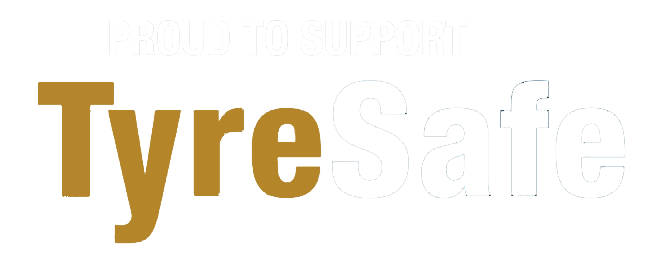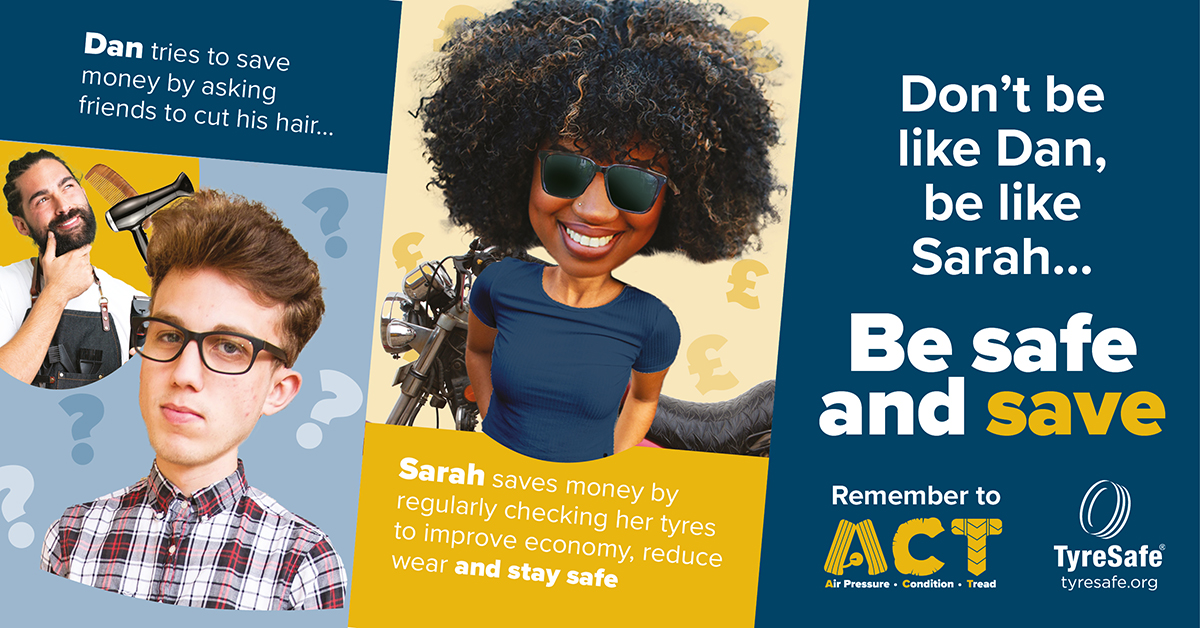Tyre Safety
Month 2023

‘Be Safe and Save’
As part of this year’s Tyre Safety Month campaign, drivers are being urged to consider the risks involved in using hacks and falsely economic activities when it comes to tyre maintenance.
This month, we are supporting TyreSafe and their annual campaign to remind drivers of the benefits and importance of proper tyre maintenance. After all, the only point of contact between your vehicle and the road, tyre safety is crucial for safe and effective braking.
Protect yourself and your passengers by ensuring that all the tyres on your vehicles are fit for purpose before embarking on your journey. By keeping your tyres in top condition, this won’t just prevent costly repairs, but will also save lives.
Tyre Safety Facts

1 in 5
motorists have NEVER checked their tyres.

159 people
killed or seriously injured due to defective tyres.

15,000+
tyre-related convictions in the past 3 years.

£1B
wasted in unnecessary fuel due to underinflation.
Essential routine tyre checks
1. Tyre Pressure
Make sure all tyres have the correct pressure. This information can be found in the vehicle handbook, and often on the inside of the fuel filler cap or driver's door sill. Failing that, a quick online search of the vehicle's make, model and year will do the trick.

Did you know?
Under-inflated tyres can provide 50% less contact with the road, resulting in reduced vehicle control. Low pressure also reduces the lifespan of your tyres and uses more fuel.
2. Tyre Tread
Ensure that your tyre’s tread depth is at least 1.6mm for a car (we recommend 3mm for consistent wet weather performance) and this must be across the central ¾ around the whole circumference. For motorcycles over 50cc, 1mm across ¾ of the width of the tread pattern and with visible tread on the remaining ¼. For bikes under 50cc, all of the grooves from the original tread pattern must be clearly visible.
.gif?sfvrsn=6f4fbf5c_2)
Hint!
Place a 20p coin into the main tread grooves in at least three locations around each tyre. If the outer band of the coin is still visible, the tyres may be under the 1.6mm legal minimum.
3. Tyre Condition
Vehicle tyres will drive over their fair share of glass, stones, and other roadside debris, so it's important to check them for any punctures, cracks or bulges as these are strong indicators of tyre damage.
If there are any irregularities, then the tyre should be checked by a professional and repaired if needed. In some cases, the tyre may still need to be replaced even if the tread depth is still within the legal limit.
4. Vehicle Overloading
Overloading a vehicle can cause excessive heat and wear on the tyres. It is essential to ensure that the vehicle's overall weight does not exceed its Gross Vehicle Weight (GVW) Rating - found on the VIN plate or on the inside of a door frame.
The excessive heat and wear on a vehicle's tyres will compromise the handling and could lead to a blowout. Not only putting the driver/rider at risk, but their passengers and other road users in danger too. Not to mention the potential for fines, penalty points and even prison sentences in more serious cases.

About TyreSafe
Formed in 2006, TyreSafe was created with the aim to reduce the number of tyre-related incidents on the roads. They accomplish this by both raising awareness and informing motorists of the importance of regular tyre checks and maintenance. The results speak for themselves, with the reduction of deaths and injuries from tyre-related incidents dropping by 46%. You can find out more about them over on their website.
Download Our Latest Campaign
TyreSafe is educating the public about the importance of tyre safety during the holiday season through entertaining and memorable content to engage the audience. Get into the holiday spirit and tyre safety with “Keep Your Tyres in Good ‘Elf.”


